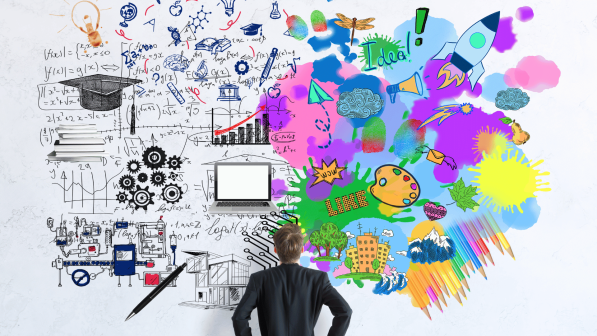Introduction:
Technology has emerged as a powerful force shaping every aspect of our lives. From communication to work, entertainment to education, technology has undoubtedly revolutionized the way we interact with the world. However, amid the glow of progress, there is a growing concern that technology might be unwittingly snuffing out one of the most cherished aspects of human expression: creativity. In this blog, we delve deep into the complexities surrounding the notion that technology is killing creativity, exploring the multifaceted reasons behind this concern and examining whether the digital age is truly an adversary or an ally to our imaginative faculties.
The Shifting Landscape of Creativity
The landscape of creativity has undergone a profound transformation in the digital age, marked by both unprecedented opportunities and notable challenges. On one hand, digital tools and platforms have democratized the creative process, allowing a wider array of voices to be heard and facilitating innovative collaborations across the globe. Creative people can now easily share their work with a vast audience, gain instant feedback, and access a wealth of resources and inspiration online.
However, this shift has also led to the commodification of creativity, where the pressure to produce content that garners likes, shares, and followers can stifle genuine artistic expression and experimentation. The constant barrage of digital distractions and the algorithm-driven prioritization of trends over originality further complicate the creative landscape, raising important questions about the long-term impact of these changes on the essence of creativity itself.
Defining Creativity in the Digital Age:
Creativity has evolved from a traditional notion of generating novel ideas, solutions, or expressions to encompass a broader and more dynamic concept. Technology has played a pivotal role in this transformation, expanding the horizons of creative outlets and introducing a plethora of new mediums and platforms for self-expression. Social media platforms have become virtual galleries where individuals can showcase their creativity through visual art, photography, writing, and multimedia content, reaching audiences far beyond their immediate physical surroundings.

The rise of digital art has blurred the lines between traditional and contemporary artistic practices, opening up innovative possibilities for experimentation and collaboration. Additionally, the emergence of multimedia storytelling has revolutionized narrative techniques, allowing storytellers to integrate text, audio, video, and interactive elements to create immersive and engaging experiences for audiences. In essence, the digital age has not only redefined how we conceive of creativity but has also democratized access to creative tools and platforms, empowering individuals from diverse backgrounds to explore, express, and share their unique perspectives with the world.
The Digital Canvas:
The advent of technology has transformed the creative landscape, making artistic pursuits more accessible to individuals regardless of their background or training. With the proliferation of graphic design software, digital drawing tablets, and music production applications, aspiring artists now have the means to delve into their craft with minimal barriers to entry.
These tools have democratized the creative process, empowering individuals to explore and experiment without the necessity of expensive equipment or formal education. The digital canvas has become a realm where imagination knows no bounds, offering endless possibilities for creative expression and innovation. Whether it’s digital painting, graphic design, or music composition, the digital realm provides a platform for individuals to unleash their creativity and share their unique perspectives with the world.
The Paradox: Technology as a Double-Edged Sword
Information Overload and Superficial Engagement:
One of the primary arguments asserting technology’s negative impact on creativity revolves around the concept of information overload. In an era where the internet is a bottomless well of data, individuals may find themselves drowning in a sea of information, leading to superficial engagement with content. The constant influx of data can hinder deep thinking and contemplation—the very foundation of meaningful creativity. This phenomenon is exacerbated by the rise of social media platforms, where content consumption often takes the form of rapid scrolling and quick judgments. The pressure to keep up with the ever-flowing stream of content may discourage individuals from immersing themselves in reflective, creative processes.
Algorithmic Confinement:
While technology has the potential to expose individuals to a wealth of information, it also has the ability to trap them in algorithmic bubbles. Social media algorithms, in particular, curate content based on user preferences, creating echo chambers that reinforce existing beliefs and preferences. This algorithmic confinement can limit exposure to diverse perspectives, stifling the cross-pollination of ideas that is essential for genuine creative breakthroughs.
Instant Gratification and Fear of Failure:
The culture of instant gratification fostered by technology has led to a fear of failure that can hinder the creative process. Social media platforms often emphasize immediate validation through likes, shares, and comments. The fear of public failure or criticism can discourage individuals from taking creative risks, experimenting with new ideas, or embracing the iterative nature of the creative journey. Creativity, by its very nature, involves a degree of uncertainty and vulnerability. The pressure for instant success in a public forum may lead individuals to opt for safer, more conventional creative endeavors, potentially stifling innovation.
Depersonalization of Creative Expression:
The integration of templates, presets, and automated tools into creative processes undoubtedly streamlines efficiency, yet it also poses a challenge to the personal essence of creative expression. While these tools offer convenience and speed, they run the risk of diluting the unique human touch that distinguishes genuine creativity. Through their utilization, there’s a potential for the depersonalization of creative output as the distinctiveness and individuality inherent in truly innovative works of art may become overshadowed by standardized conventions. As technology continues to facilitate the swift creation of content at the click of a button, there’s a pressing concern regarding the preservation of authenticity and the safeguarding of the intrinsic human element within creative endeavors.
Countering the Erosion: Nurturing Creativity in the Digital Age
Mindful Consumption and Digital Detox:
To combat the negative effects of information overload, individuals must adopt mindful consumption habits. Establishing periods of digital detox, where one deliberately disconnects from technology, can provide the mental space needed for deep thinking and creative reflection. Balancing screen time with offline creative activities is crucial for maintaining a healthy relationship with technology.
Diversification of Digital Exposure:
Actively seeking out diverse content and intentionally broadening digital exposure can counteract algorithmic confinement. Engaging with platforms that prioritize serendipity and discovery, as well as exploring content outside one’s usual preferences, can expose individuals to a variety of creative stimuli. Breaking free from algorithm-driven recommendations is essential for fostering a diverse and enriching creative experience.
Embracing Failure as a Catalyst for Growth:
In the journey of nurturing creativity, conquering the fear of failure stands as a pivotal step. Embracing a growth mindset, wherein failures are embraced as gateways to learning and advancement, can liberate individuals from the stifling grip of judgmental anxieties. Establishing a supportive environment that champions experimentation and risk-taking is paramount in cultivating a culture where creativity thrives. By shifting our perspective on failure from one of defeat to one of opportunity, we unlock the potential for boundless growth and innovation.
Humanizing Technology:
Instead of perceiving technology as a barrier to creativity, there’s merit in humanizing the digital landscape. Utilizing technology as a means to augment, rather than supplant, human creativity is essential. By weaving personal narratives, distinct viewpoints, and genuine expressions into digital creations, we ensure that technology serves as an enabler rather than an overpowering influence in the creative journey. This approach honors the symbiotic relationship between humanity and technology, allowing for the harmonious integration of both elements in the creative process.

Conclusion
The question of whether technology is killing creativity is a nuanced and complex inquiry. While the digital age has undeniably transformed the landscape of creativity, introducing new mediums, tools, and platforms, it has also brought forth challenges that, if left unaddressed, could erode the very essence of creative expression. Understanding the paradox of progress—where technology acts as both a catalyst and a potential inhibitor of creativity—is crucial for individuals seeking to navigate the digital realm while preserving their imaginative faculties. By fostering a mindful approach to technology consumption, actively diversifying digital exposure, embracing the iterative nature of creativity, and humanizing the digital experience, we can hope to strike a balance that allows technology and creativity to coexist harmoniously in the ever-evolving tapestry of human expression.
Related Posts





